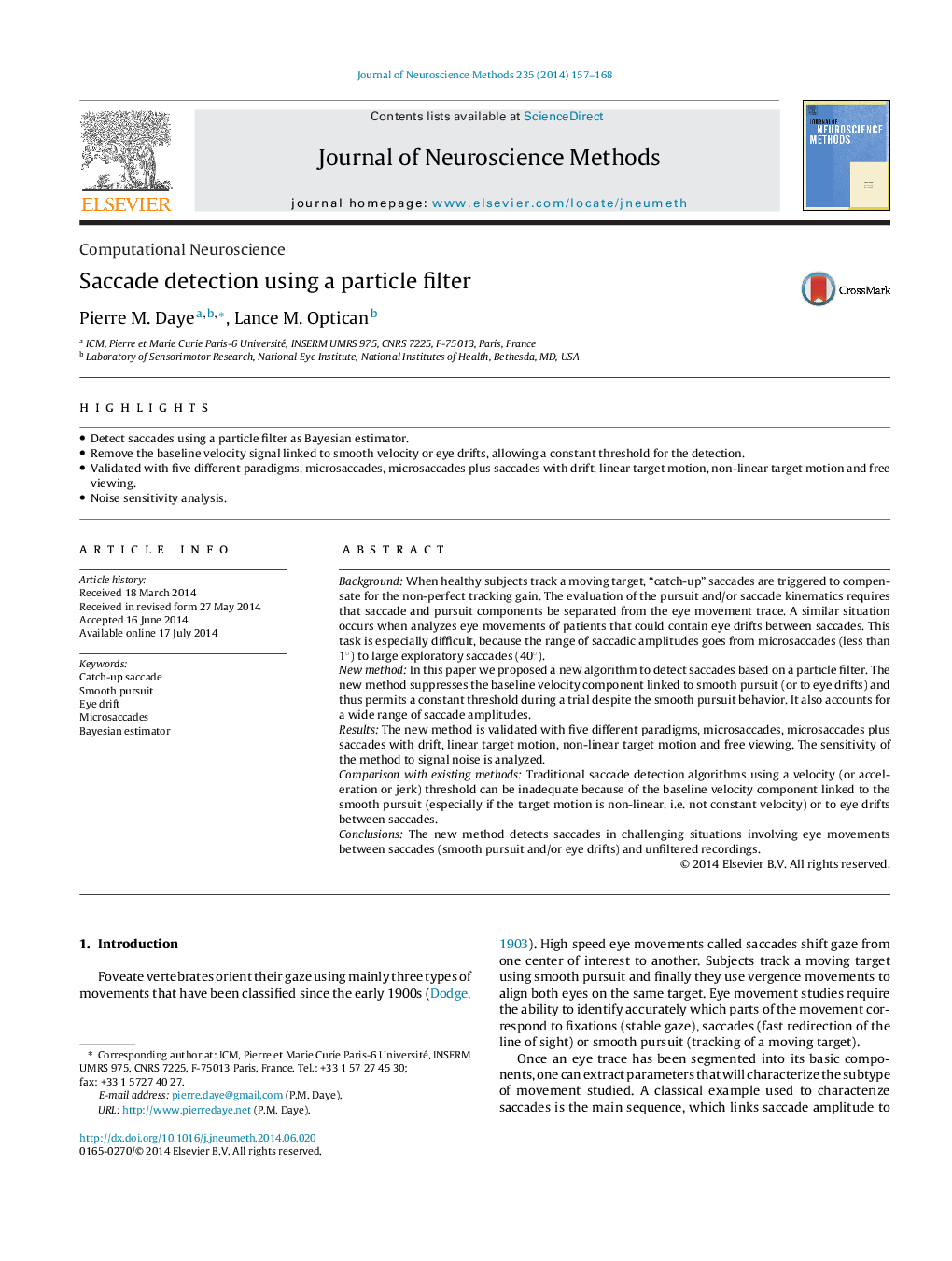| کد مقاله | کد نشریه | سال انتشار | مقاله انگلیسی | نسخه تمام متن |
|---|---|---|---|---|
| 6268629 | 1614634 | 2014 | 12 صفحه PDF | دانلود رایگان |
- Detect saccades using a particle filter as Bayesian estimator.
- Remove the baseline velocity signal linked to smooth velocity or eye drifts, allowing a constant threshold for the detection.
- Validated with five different paradigms, microsaccades, microsaccades plus saccades with drift, linear target motion, non-linear target motion and free viewing.
- Noise sensitivity analysis.
BackgroundWhen healthy subjects track a moving target, “catch-up” saccades are triggered to compensate for the non-perfect tracking gain. The evaluation of the pursuit and/or saccade kinematics requires that saccade and pursuit components be separated from the eye movement trace. A similar situation occurs when analyzes eye movements of patients that could contain eye drifts between saccades. This task is especially difficult, because the range of saccadic amplitudes goes from microsaccades (less than 1°) to large exploratory saccades (40°).New methodIn this paper we proposed a new algorithm to detect saccades based on a particle filter. The new method suppresses the baseline velocity component linked to smooth pursuit (or to eye drifts) and thus permits a constant threshold during a trial despite the smooth pursuit behavior. It also accounts for a wide range of saccade amplitudes.ResultsThe new method is validated with five different paradigms, microsaccades, microsaccades plus saccades with drift, linear target motion, non-linear target motion and free viewing. The sensitivity of the method to signal noise is analyzed.Comparison with existing methodsTraditional saccade detection algorithms using a velocity (or acceleration or jerk) threshold can be inadequate because of the baseline velocity component linked to the smooth pursuit (especially if the target motion is non-linear, i.e. not constant velocity) or to eye drifts between saccades.ConclusionsThe new method detects saccades in challenging situations involving eye movements between saccades (smooth pursuit and/or eye drifts) and unfiltered recordings.
Journal: Journal of Neuroscience Methods - Volume 235, 30 September 2014, Pages 157-168
